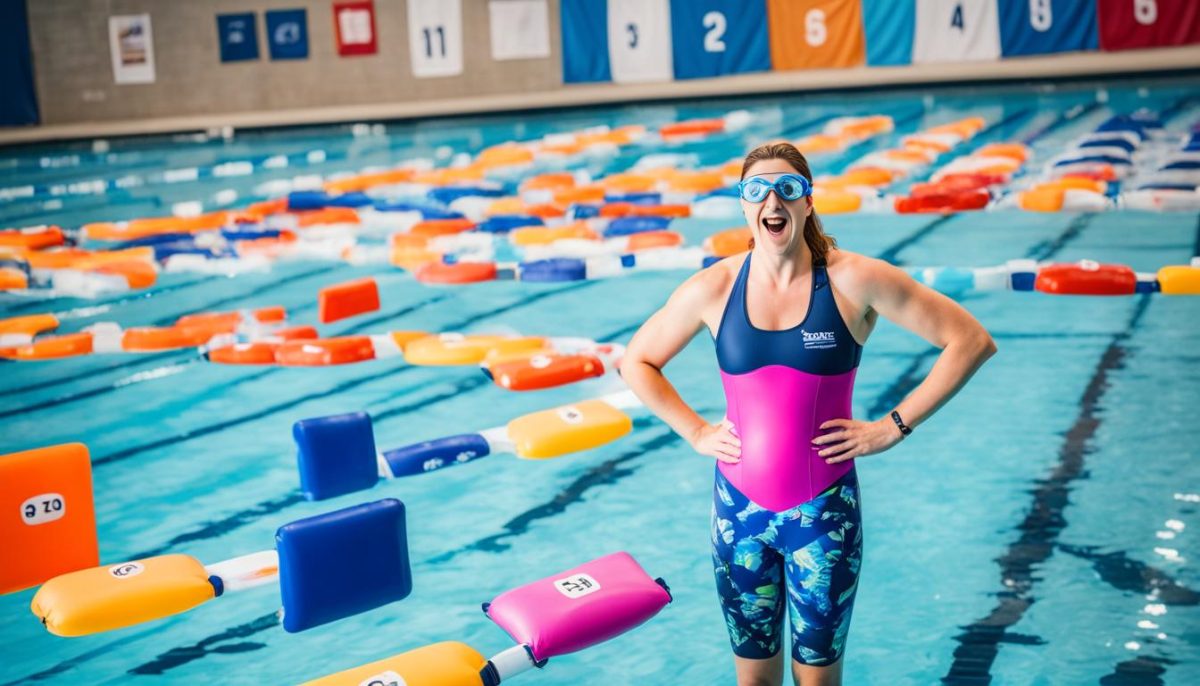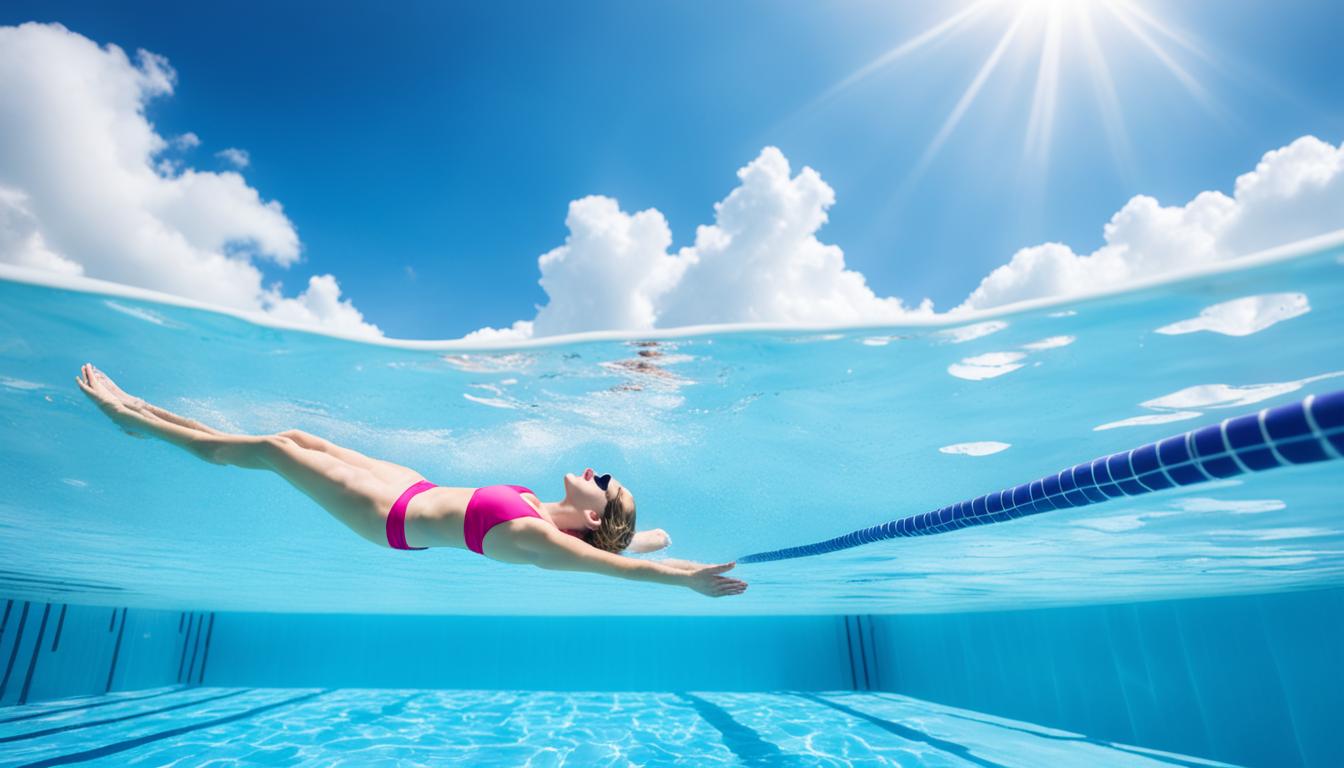Are you eager to dive into the world of swimming? Whether you’re a beginner or looking to improve your swimming skills, mastering your strokes is an exciting journey. In this article, we will explore the timeframe it takes to learn how to swim and achieve proficiency in different swimming strokes.
Learning how to swim is a process that varies for each individual. It depends on factors such as your age, physical fitness, and commitment to practice. While there is no fixed timeline for becoming a competent swimmer, with dedication and consistent effort, you can make remarkable progress.
Whether you aim to conquer the freestyle stroke, backstroke, breaststroke, or butterfly, this step-by-step guide will equip you with the knowledge and techniques to excel in the water. So, let’s get started and embark on a rewarding swimming journey together.
Throughout this article, we will cover everything from the basics of swimming to advanced techniques, ensuring you have the tools to become a confident and skilled swimmer. So, get your swimsuit ready and let’s dive in!
Getting Started with Learn How To Swim
Before you can start learning specific swimming strokes, it’s important to get familiar with the fundamentals. In this section, we will cover the basic skills necessary to begin your swimming journey. From water safety to breathing techniques, we will make sure you have a solid foundation before diving into the strokes.
Swimming is not only a great form of exercise but also a valuable life skill. Whether you want to conquer your fear of water, participate in water sports, or simply enjoy some leisurely laps in the pool, learning how to swim is an essential step.
Water Safety
Before you take your first plunge into the water, it’s crucial to prioritize water safety. Remember these key tips:
- Never swim alone.
- Always swim in designated areas under the supervision of a lifeguard.
- Be aware of your surroundings, including the depth and currents of the water.
- Learn basic water rescue and self-rescue techniques.
Breathing Techniques
Proper breathing is vital for a successful swimming experience. Here are some essential breathing techniques to practice:
- Practice breathing out through your nose and mouth underwater.
- Learn to inhale quickly and exhale fully before taking a breath while swimming.
- Focus on maintaining a steady rhythm of breathing, synchronizing it with your strokes.
Remember, learning how to swim is a process that requires patience and practice. By mastering these basic skills, you’ll feel confident and ready to progress to the next level of swimming techniques.
Now that you have a solid foundation in swimming basics, let’s dive deeper into the world of swimming strokes in the next section.

Mastering Swimming Strokes
Once you have a good grasp of the swimming basics, it’s time to start mastering different strokes. In this section, we will delve into the various swimming strokes: freestyle, backstroke, breaststroke, and butterfly. Mastering these strokes will not only enhance your swimming skills but also provide you with versatility in the water.
Freestyle
Freestyle, also known as the front crawl, is one of the most popular and efficient swimming strokes. It involves a continuous alternating arm movement, with the body in a horizontal position. To swim freestyle effectively, focus on proper arm and leg coordination, as well as rhythmic breathing. Practice drills such as the catch-up or fingertip drag to improve your technique.
Backstroke
Backstroke, as the name suggests, is performed on your back, with an alternating arm movement. This stroke requires good body alignment and a steady kicking motion to propel yourself through the water. Keep your face looking up to the sky and use landmarks or flags to guide your direction. Practice the “catch and release” arm motion to increase your speed and efficiency.
Breaststroke
Breaststroke is the oldest recognized stroke and is known for its distinctive frog-like movements. It involves a simultaneous arm pull, kick, and breathing rhythm. To master breaststroke, maintain a streamlined body position, pull your arms in a circular motion, and use a powerful whip kick. Remember to time your breaths during every stroke cycle.
Butterfly
Butterfly is a challenging yet graceful stroke that requires strength and coordination. It is characterized by simultaneous arm movements, an undulating body motion, and a dolphin kick. To swim butterfly effectively, focus on a symmetrical arm pull, a strong body undulation, and a strong kick from your hips. Regular practice and drills, such as dolphin kicks on your back, can help you improve your butterfly technique.
By taking the time to master each swimming stroke, you can become a more confident and skilled swimmer. Remember, practice makes perfect, so don’t hesitate to dedicate time to refining your technique in the pool. Whether you choose to swim freestyle, backstroke, breaststroke, or butterfly, each stroke offers its own unique challenges and rewards. So dive in, practice regularly, and soon you’ll be gliding effortlessly through the water.
Progressing and Advanced Techniques in Swimming
Now that you have mastered the swimming strokes, it’s time to take your skills to the next level. In this section, we will explore advanced swimming techniques, drills, and strategies that will help you become an even stronger and more confident swimmer.
One of the key aspects of advancing your swimming skills is focusing on technique. By refining your stroke mechanics and body positioning, you can significantly improve your speed and efficiency in the water. Working with a qualified coach or instructor can be invaluable in helping you identify areas for improvement and providing targeted feedback.
In addition to technique, incorporating swimming drills into your training routine can greatly enhance your overall performance. Drills such as kickboard exercises, one-arm drills, and underwater dolphin kicks can help isolate specific movements and develop strength and coordination. By practicing these drills regularly, you can reinforce proper technique and build muscle memory.
To further challenge yourself and improve your overall swimming ability, consider incorporating interval training and endurance workouts into your routine. Interval training involves alternating between high-intensity sprints and active recovery periods, while endurance workouts focus on gradually increasing your swimming distance at a sustained pace. These types of workouts can improve both your speed and stamina.
By continuing to progress and explore advanced swimming techniques, practicing swimming drills, and challenging yourself with targeted workouts, you will continue to improve and enhance your swimming skills. Whether you are aiming to compete at a higher level or simply want to enjoy the water more, dedicate time and effort to your swimming practice, and you will see significant improvements over time. Happy swimming!

